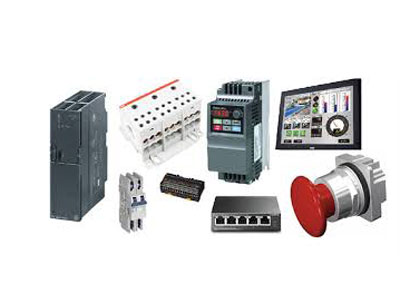What Is The Difference Between PLC And Relay Control Panels?
Key Takeaway
The main difference between a PLC and a relay control panel lies in their complexity and function. A PLC (Programmable Logic Controller) is an industrial computer that controls processes using logic and input/output (I/O) modules. It can read sensor signals, communicate in real-time, and collect data on parameters like temperature or pressure. PLCs are programmable, allowing changes to logic without rewiring.
In contrast, a relay control panel contains relays, which are switches that open or close circuits to send power or signals to equipment. They require more wiring and manual adjustments for logic changes. PLCs offer advantages like reduced wiring, integrated timing and counting functions, and higher reliability than traditional relays. While both can control devices like motors, PLCs provide greater flexibility and are better for complex automation tasks.
Overview of PLC and Relay Control Panels
When it comes to industrial automation, understanding the fundamentals of control panels is essential. PLC (Programmable Logic Controller) and relay control panels are two prominent systems used in various industries to automate processes. A PLC is a digital computer specifically designed to control machinery and processes through programmable instructions. Unlike traditional relay control panels, PLCs offer advanced programming capabilities and can handle complex tasks with more flexibility.
Relay control panels, on the other hand, use electromechanical relays to control circuits. They are simpler in design, where relays act as switches that open or close circuits based on electrical signals. While relay control panels have been the go-to solution for many industrial applications due to their reliability, they lack the sophistication and adaptability of modern PLCs.
The primary difference between the two lies in their approach to control. PLCs operate on programmable logic and use a microprocessor-based architecture, whereas relay panels rely on hard-wired circuits with physical relays to perform operations. This distinction impacts how each system is used and maintained.

Differences in Functionality and Technology
The functionality of PLC and relay control panels sets them apart significantly. PLCs are equipped to handle complex logical operations and can be programmed to respond dynamically to various inputs and outputs. Their advanced capabilities include timer functions, counting, arithmetic operations, and data handling, making them ideal for complex industrial automation tasks.
Relay control panels, on the other hand, are best suited for simpler tasks that do not require complex decision-making. They function by connecting a series of relays, contactors, and switches in a predetermined configuration to control circuits. While effective for basic on/off control, relay panels cannot manage intricate processes or make real-time adjustments based on input data.
Technologically, PLCs are powered by microprocessors and can be easily programmed and reprogrammed through user-friendly software interfaces. Relay control panels require extensive wiring and manual adjustments for modifications, making them less adaptable to changes in automation needs.
Cost and Maintenance Considerations
When it comes to cost, relay control panels are generally less expensive upfront compared to PLC systems. The simpler design of relay panels means that they can be more budget-friendly for smaller or less complex projects. However, as the complexity of the task increases, so does the cost of wiring and maintaining relay control systems. Extensive wiring can lead to increased labor and materials expenses, which can offset the initial savings.
PLCs, while more expensive at the initial purchase stage, offer better long-term value due to their scalability and ease of modification. PLC systems can be programmed for new tasks without the need for major rewiring, saving time and cost on maintenance and upgrades. The ability to troubleshoot and diagnose problems using diagnostic tools within the PLC software also reduces downtime, making them more cost-effective in the long run.
Maintenance of PLCs is typically more manageable due to their user-friendly interfaces and built-in diagnostic functions. Relay control panels, by contrast, may require more manual labor to inspect and maintain, especially as the system expands and becomes more complex.
Suitability for Different Applications
Choosing between PLC and relay control panels depends largely on the nature of the application. PLCs are well-suited for industries that need flexibility and the ability to manage complex processes. For instance, manufacturing plants, water treatment facilities, and automated assembly lines benefit from the versatility and ease of programming that PLCs provide. Their ability to handle multiple input and output points with sophisticated logic makes them essential for tasks that demand precision and adaptability.
Relay control panels find their place in applications that require basic on/off control. Simple machinery like conveyor belts, basic heating systems, and simple motor operations can be efficiently managed by relay panels. They work well for projects where cost and simplicity take precedence over advanced functionalities. For industries that do not need dynamic response or complex control, relay panels remain a reliable choice.
Pros and Cons of Each System
PLCs have numerous advantages. They are highly programmable, offering adaptability for new processes without physical changes to wiring. Their ability to integrate with advanced monitoring systems and other technologies like IoT makes them future-proof. However, PLCs come with a higher initial cost and may require specialized training for programming and maintenance.
Relay Control Panels, on the other hand, offer simplicity, reliability, and lower initial costs. Their straightforward design can be beneficial for small-scale operations and low-complexity tasks. But, they fall short when flexibility or advanced processing is required. Extensive wiring makes them less efficient for complex tasks and challenging to modify.
Conclusion
Understanding the difference between PLC and relay control panels is crucial for selecting the right system for your industrial needs. PLCs provide unmatched flexibility, scalability, and ease of integration with modern technologies, making them ideal for complex and evolving processes. Relay control panels, while more budget-friendly and simpler to maintain, are best suited for basic operations where advanced control isn’t necessary. By considering the functionality, cost, and suitability for your application, you can make an informed choice that aligns with your operational requirements.
